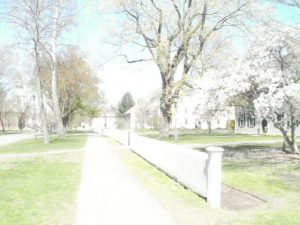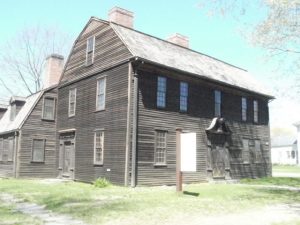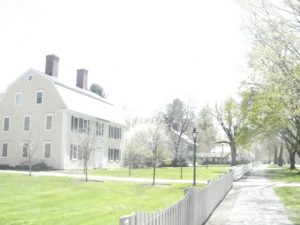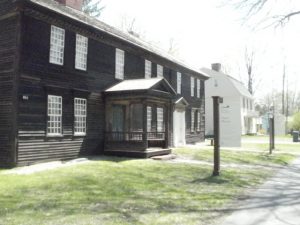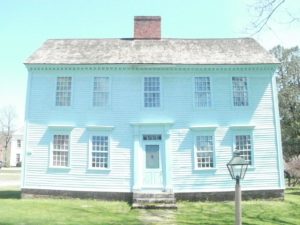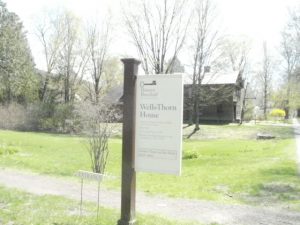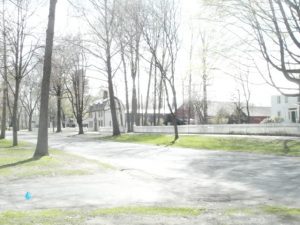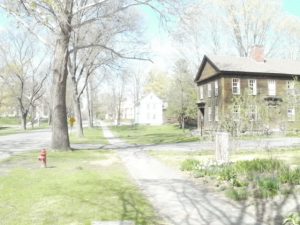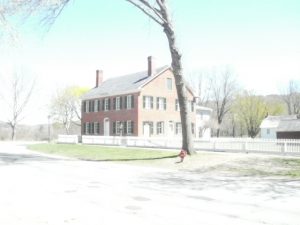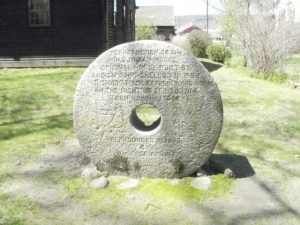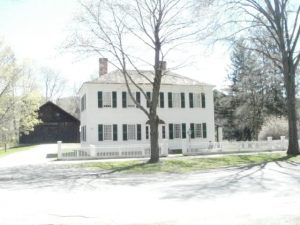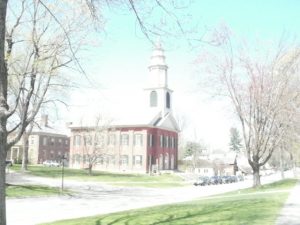Historic Deerfield
Deerfield, MA
https://www.historic-deerfield.org/
We were looking for a place to spend a day during the April school break and after a little searching online landed on Historic Deerfield’s website. Its presentation screamed out that there was an energetic, focused organization behind its messaging. Really wanted a chance to talk to the people behind the scenes if we got a chance. So, we went.
It was a gorgeous spring day in late April – bright sun and approaching 70 degrees. The leaves were just developing and flowers were budding. Couldn’t have asked for a better day to visit this site.
Signs pointing to parking areas are well placed and highly visible. The Visitor Center at Hall Tavern is a welcoming place to begin. It also has a nice gift shop with a fair selection of books.
The old village of Deerfield is infamous for being the site of a particularly violent French-allied raid in 1704. The historic site explores this raid, which initially was the source of our interest. The stockade fort is mapped out in interpretive signage, along with locations associated with the unfolding stages of the raid.
The village that sprang up after this raid, however, is the site’s most impressive attribute. The historic site is actually a sprawling, mile-wide museum. Here, quite a number of 18th century and even early 19th century buildings survived the years and are available to tour. Interspersed with the well-kept colonial-era homes and businesses belonging to the museum site are equally well-kept private homes of various eras. Put simply, the entire mile-long street composing “Historic Deerfield” is an incredibly beautiful mixture of old and new. It is clear the people who live on this street are proud of the history surrounding them and maintain their homes in a way that enhances the experience. We found the homeowners and townspeople quite friendly, many of whom were out walking, jogging, or tending pretty gardens.
Deerfield claims to be the best researched colonial village in America. We believe it. There were at least six buildings open to tour that day, along with a number that were closed for one reason or another. The research behind the interpretation of the open buildings was outstanding – information about every object visible in the rooms could be found in a binder nearby. The volunteers were chipper, knowledgeable and eager to engage. Having so much research at their fingertips allows for more in-depth exploration of former occupants’ lives – who they were and what their daily lives were like – than is typical elsewhere. The close proximity of the Connecticut River had a strong influence on the lives and commerce of the villagers.
You can get a glimpse of each of the historic structures on the Historic Deerfield website posted at the top of the page. Nothing beats actually walking around in them. There are some diverse architectural features despite once being a homogenous New England/ English village with little cultural diversity. Have fun exploring! Even in April, the museum offered regularly scheduled outdoor tours of the site that give a general overview of the houses and other points of interest. Tour schedules of the individual houses are neatly posted outside of each house – we had great conversations with the guides; all of whom were highly knowledgeable and engaging.
The Dwight House is a particular draw for families – it is the hands-on interpretive space of the museum called the “Apprentices’ workshop.” Lots of focus on allowing students of all ages to try their hand at woven wool textiles and ceramics. A special treat is a room dedicated to the age of wood and architectural woodworking. It feels like a live woodworking shop with tools like planers available for the entire family to try.
It was here that we got into a lively conversation with the guides about how the museum guides are trained. It was obvious already that the level of professionalism and knowledge we encountered was no accident. There was a very deliberate, well-planned training system in place. A new docent, or guide, would be assigned one house to learn, master, and interpret. Only until a full mastery of that house was attained that the docent would be able to move to another to repeat the process. The object being, of course, to learn all the houses over the course of time. Well done, Deerfield – many museums/historic sites overlook the importance of properly vetting and training their docents to ensure a great experience for visitors. Great experiences of visitors through the interaction of those they interface with are the backbone for funding sources and repeat business. This site gets that and takes it very seriously. Others, not so much…
Perhaps the most impressive part of the site, and its most museum-like quality, is its object archival space. It is state of the art and, quite frankly, a mind-blowing experience. Many museums use what might be called an ice-berg system for exhibition. The visible surface is out on display, usually the best quality pieces. The bulk of the collection is then hidden from view, possibly on some sort of “rotation” basis at best. At Deerfield, everything can be seen. Its really ingenious. The storage area of the museum is accessible on the second floor, where you instantly come face to face with thousands of objects in well-lit glass cases. The cases have several tiers and the objects are grouped by class; chairs are in one section, powder horns another. China, weapons, furniture, etc. are displayed in “storage” in what seems like endless glass corridors. Many objects have brief, but informative, labeling. WOW.
Before you leave the historic district, make sure you go to the old village cemetery – it is at the end of the road that passes by the exclusive private school Deerfield Academy.
We ended our day by having dinner at the closest restaurant to the site – the Deerfield Inn/ Champney’s Restaurant. It had the feel of an upscale country-club eatery from the outside and some of its interior furnishings, but turned out to be quite comfortably casual. The food was good and prices seemed reasonable for what we ordered. Staff was pleasant and engaging.
Overall impression was that we knew the site had great potential, but even with somewhat high expectations the site exceeded everything we had hoped and then some. The season was too early to have the full effect of living history demonstrations and other interpretive programs/events on site, but it didn’t matter. The delivery of the site’s routine offerings impressed us & we look forward to going back. HIGHLY recommended.



